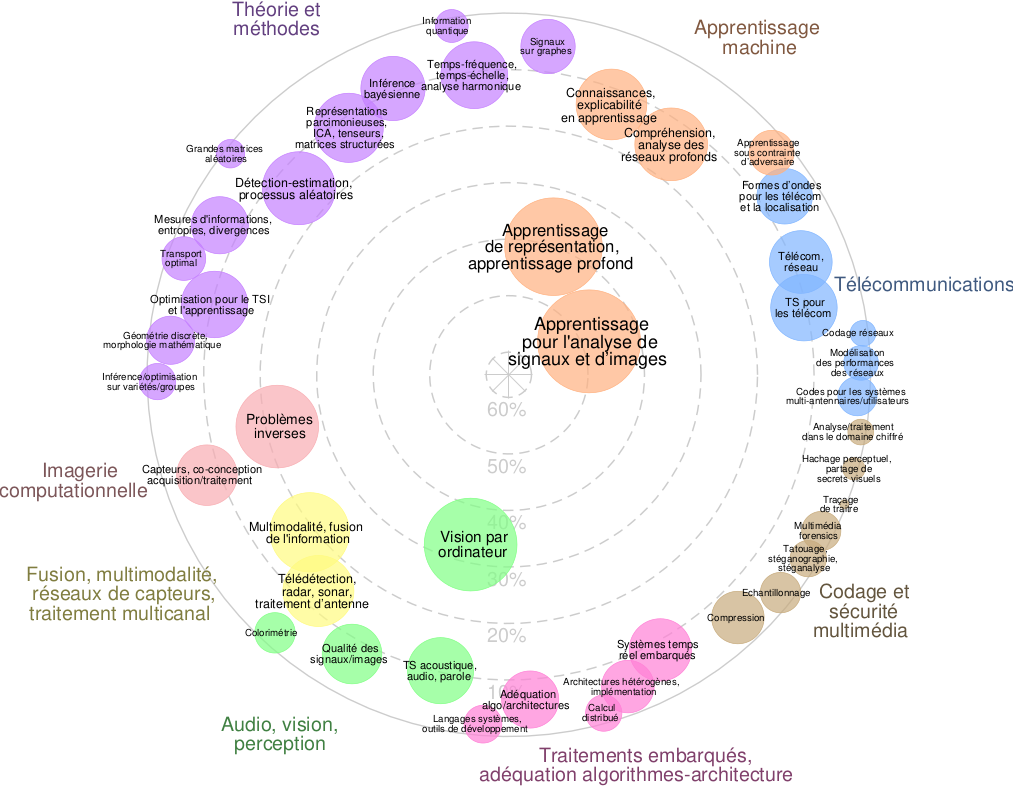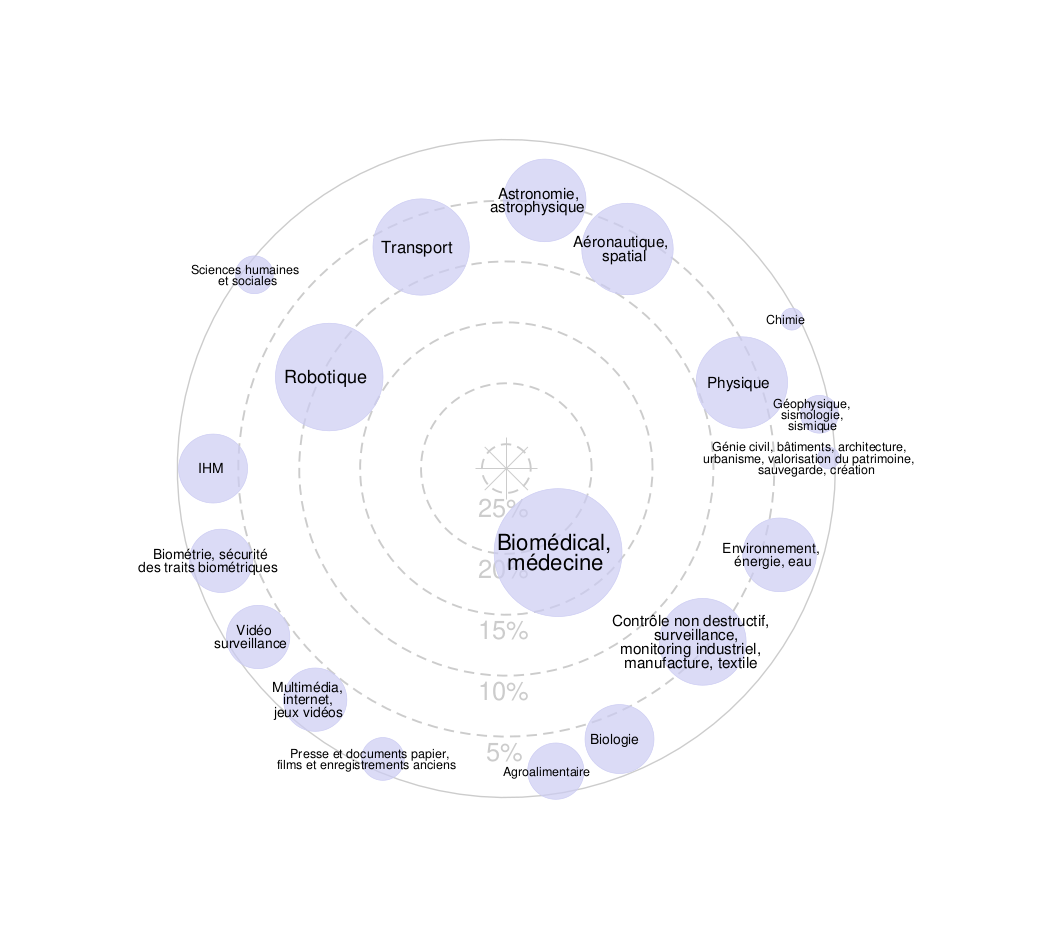Socio-economic and scientific context
Low Grade Gliomas (LGG, WHO grade II) are infiltrative brain tumours that usually occur in young patients (mean age of 38 years). Due to their slow growth and brain plasticity, most patients provide normal or nearly normal clinical examination for several years. Surgery is considered to be the best treatment for LGGs because of the impact on the anaplastic transformation delay and the improved survival rate. When resecting LGGs located in eloquent areas, intraoperative electrical stimulation mapping under awake conditions has been shown to be essential for the localization of the patient’s neurological functions which allows the surgeon to maximize the extent of resection while decreasing the risk of permanent deficits. Several papers have been published to better identify motor, visual, language and cognitive functional areas by cortical and subcortical stimulation during surgery. The localization of these areas is based on neuropsychological tests performed just after stimulation and requires the patient to be awake and cooperative. The patient is thus asked to perform various exercises according to the stimulated areas. These exercises are presented to the patient using a simple computer screen or a tablet which shows stimuli (photos, diagrams…) according to the in-progress tests. The electrical stimulation causes a reversible lesion in the targeted area and allows the medical staff to analyse the patient’s response by identifying possible neuropsychological deficits that could result from resecting this area. These temporary intraoperative deficits can simultaneously involve several observable forms, for instance speech impairments, facial palsy, or motor disorders, depending on the brain region stimulated and the cognitive function tested. Therefore, depending on the patient’s response, the stimulated brain area is considered vital or not and should be preserved or resected respectively. Although the surgical technique has significantly evolved in recent years, there are still limitations: neuropsychological tests are not exhaustive enough to accurately assess the cognitive response of the patient after brain stimulation, and the response analysis may be subjective as it depends on the availability and the experience of the person analysing these intraoperative signs. These limitations may have a significant impact on the accuracy of the brain mapping, and thus on the quality of the resection area.
Working hypothesis and aims
The physiological and neurofunctional responses following brain stimulation are still poorly understood today. As part of this project, we want to better study these effects via a multimodal analysis of various measurements acquired during the intervention and following stimulation in the context of awake surgery, in particular Electrophysiological data such as spontaneous EMG and motor evoked potentials (MEPs). Though widely used in other neurosurgical procedures, they remain underutilized in awake surgery even though they offer promising new perspectives for a more precise and early analysis of the patient’s responses. Our goal is to optimize the mapping and therefore the resection of the tumor thanks to a better understanding of these motor responses. As part of this project, we therefore want to acquire intraoperative data related to motor functions and develop new methodologies allowing the automatic detection of motor-based intraoperative neurological disorders.
Main milestones of the thesis
The doctoral thesis will therefore be divided into two main tasks: (1) the collection and structuring of electrophysiological data with also other data already acquired through the use of a solution already developed as part of a previous thesis [1], and (2) the development and validation of an algorithm based on these data to analyse and extract EMG and MEP features allowing the early identification of motor disorders. Multimodal approaches will be investigated in order to potentially identify new correlations between acquired data and to highlight new early neurofunctional and physiological signs.
Laboratory and environment
The PhD will be hosted at LaTIM in Brest, France. Born from the complementarity between health sciences and communication sciences, LaTIM (Laboratory of Medical Information Processing) conducts multidisciplinary research led by members of the University of Western Brittany (UBO), IMT Atlantique, INSERM, and Brest University Hospital (CHRU). Information is at the core of the unit’s research project; due to its multimodal, complex, heterogeneous, shared, and distributed nature, it is integrated by researchers into methodological solutions aimed at improving medical care. The PhD student will therefore have access to all its dedicated platforms, including PLaTIMed (www.platimed.fr) and PLACIS (https://latim.univ-brest.fr/platforms). The PLaTIMed platform will provide a realistic surgical environment, allowing for initial concrete trials and facilitating the integration of measurement sensors and algorithms to assist the medical team in identifying neurological disorders. The PLACIS platform, on the other hand, will offer access to storage and high-performance computing solutions necessary for the development, training, and evaluation of algorithms processing these multimodal data, particularly EMG. This research on awake neurosurgery is also part of several collaborations. The laboratory is working with the Neurosurgery Department of Brest University Hospital (CHU de Brest), specifically with R. Seizeur and V. Saliou, neurosurgeon and neurologist at CHU de Brest, who are also researchers at LaTIM and co-supervisors of this PhD. The privileged access to the neurosurgery operating room, as part of a clinical research protocol, will enable the acquisition of crucial data for developing our approaches. International collaborations were also initiated in 2024 with the TWMU University Hospital in Tokyo (Tokyo Women’s Medical University) through a mobility program , which led to a joint publication [2]. We aim to build upon this initial work by analyzing new electrophysiological data.
Keywords
Brain Awake Surgery, electrophysiological data, Signal processing, classification, Artificial Intelligence
Profile
Holding a Master’s degree (Master 2/Engineering School, BAC+5), the candidate must have strong skills in applied mathematics, signal processing, statistical and deep learning, and software development (C++ / Python), as well as a strong interest in the medical field. Proficiency in English is essential.
Application
CV with list of publications, cover letter and two letters of recommendation, have to be sent to Guillaume Dardenne (guillaume.dardenne@inserm.fr) before June, 2025.
Publications from the team related to the topic
[1] Maoudj, I., Garraud, C., Panheleux, C., Saliou, V., Seizeur, R., & Dardenne, G. (2023, July). A modular system for the synchronized multimodal data acquisition during Awake Surgery: towards the emergence of a dedicated clinical database. In 2023 45th Annual International Conference of the IEEE Engineering in Medicine & Biology Society (EMBC) (pp. 1-4). IEEE.
[2] Maoudj, I., Kuwano, A., Panheleux, C., Kubota, Y., Kawamata, T., Muragaki, Y., … & Dardenne, G. (2024). Classification of Speech Arrests and Speech Impairments during Awake Craniotomy: a multi-databases analysis. International Journal of Computer Assisted Radiology and Surgery, 1-8.





